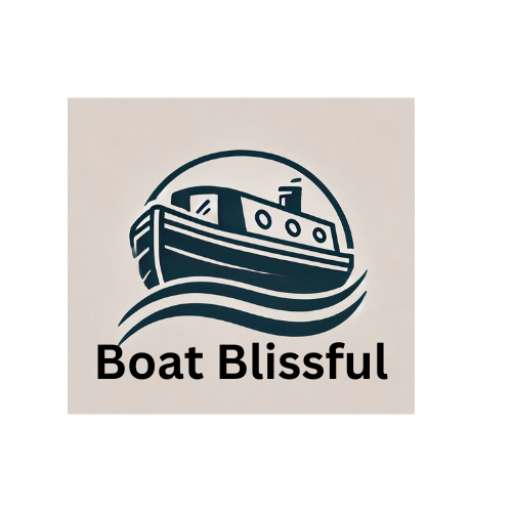Avoiding Common Mistakes When Buying A Narrowboat
Why Narrowboat Buying Trips People Up
Getting Prepared: What to Know Before You View
- Budget Realistically: Factor in not just the boat’s price, but also mooring fees, insurance, ongoing maintenance, fuel costs, and even unexpected repairs.
- Think About Size: Boats range from 30 foot weekenders to 70 foot liveaboards. Figure out what you need in terms of living space, storage, and comfort. Longer boats need more skill to handle on the canals, so get a feel for what size you’d be confident steering.
- Decide on Style: Traditional, cruiser, or semitraditional stern? Every layout comes with tradeoffs for outdoor space, indoor comfort, and engine access. Cruiser sterns are friendly for groups, while traditional sterns give you more inside space. Pick which suits your plans best.
- Be Honest About Skills: DIY repairs are common in boating. If you’re not handy, you might want a boat needing less work or factor in pro help. Also, look into nearby marinas and service providers in your intended cruising area for extra peace of mind.
- Plan for Storage: Remember that you’ll need places to stash your gear, bikes, and spare parts. Smaller boats are more nimble but might feel cramped for full time living.
Big Mistakes Buyers Make (And How to Dodge Them)
- Skipping the Survey: Some buyers trust their gut and skip a professional survey. This can leave you with hidden rust, rot, or costly engine problems. Surveys catch issues only obvious to a trained eye. Always get one! The cost might seem high up front, but it’s much less than major repairs out of pocket.
- Ignoring Hull Condition: The hull is your boat’s foundation. Overlooking pitting or corrosion could mean thousands in repairs. Check how recently the hull was blacked, and if it’s ever needed plating. If there are any recent weld patches, ask about them. Budget for hull blacking every two or three years.
- Overlooking License and Paperwork: Missing Boat Safety Scheme (BSS) certificates, expired licenses, or sketchy paperwork can mean trouble. Make sure you get a clear history of ownership and all official documents before buying. Check the registration and see if there are any outstanding fees owed to the Canal and River Trust.
- Underestimating Maintenance Needs: Boats always need upkeep. If a seller claims “maintenance free,” be skeptical. Engines, heating, and toilets all need care. Check service records and ask what jobs are due soon—especially blacking, engine servicing, and anode replacements.
- Rushing Into a Purchase: Falling for the first boat without viewing others is tempting. Take your time, compare, and don’t be pressured by stories about other buyers waiting. Listing prices are just a starting point, so negotiate if you find issues that need immediate work.
The Viewing: What to Look For
- Exterior: Walk the length of the boat and check for dents, visible rust, and the state of the paint. Poor paintwork could mean underlying problems. Minor marks are normal on older boats, but look for areas of fresh paint that might be hiding repairs.
- Hull: Look for recent blacking and signs of hull repairs (extra plating, weld patches). Ask when the hull was last inspected out of water. Feel along the bottom edge if docked, and keep an eye out for flaking or suspicious bubbles.
- Interior: Smell for damp and mold, check under floor coverings, and press along walls for hidden water damage. Open cupboards under sinks to make sure there’s no rot. Bring a torch to check dark corners and behind furniture.
- Engine Bay: A clean engine bay usually suggests good maintenance. Look for leaks, off smells, and sludge under the engine tray. Ask the seller to start the engine from cold while you’re there and notice how easily it starts and if there’s smoke.
- Electrics and Plumbing: Try taps, flush toilets, switch on lights, and check the state of the fuse board. Old DIY wiring jobs can be risky. Ask for details of any upgrades and make a note if you spot any makeshift repairs.
- Heating: Test out any stoves, radiators, or diesel heaters. These are vital for living aboard through the UK’s colder months. Ask how the systems are fueled and how recently they were serviced or swept.
Hull Survey and Its Importance
Reading Between the Lines
Things That Seem Like Bargains (But Aren’t)
- Project Boats: Restoration projects are nextlevel cool if you’re up for the challenge, but they eat up time and cash like nothing else. Factor in everything from hull work to new electrics and appliances—sometimes the cheap price is just the start of big spending. Unless you want a longterm project, treat these listings carefully.
- Outdated Certificates: Boats needing new BSS or out of date River/Canal licenses may seem a cheap buy, but you may pay more to get them compliant. Sellers may drop prices to pass big jobs on to the next owner.
- Unusual Layouts: Sometimes interiors are changed to maximize beds or storage, but these setups might make day to day life awkward. If walls have been moved or kitchens shifted, imagine living there for months before deciding it’s the right fit.
- No Recent Survey: Sellers dodging surveys know buyers are less likely to spot hull or engine risks. Always question why a survey isn’t available; it might point to a major issue beneath the surface.
Helpful Tips for Narrowboat Buyers
- Bring a notepad and take loads of photos at each viewing. After seeing a few, it’s easy to mix them up. Create folders for each boat afterwards so you keep details straight.
- If you spot something odd—wet patches, strange smells, weird engine noises—write it down and ask about it then and there. Don’t be afraid to doublecheck things even if the seller’s in a hurry.
- Don’t get dazzled by a boat’s decorations. Focus on mechanical basics first, then think about what you can redecorate or upgrade yourself. Cosmetic changes are far easier than expensive technical repairs.
- If you can, talk to current liveaboards and ask about their costs, tips, and regrets. Even a brief chat can reveal pitfalls you hadn’t considered.
- Save budget for immediate repairs. Most boats, even well kept ones, will need a little money spent after the sale. Prepare for essentials like safety gear, new ropes, or minor fixes you weren’t expecting.
- Research insurance policies. Specialized narrowboat policies cover unique water risks and contents much better than generic home insurance.
- Take a canal boat handling course if you’re new—this makes first days out and mooring up far easier, and could save you some bumps and scrapes.
Common Questions from First Time Narrowboat Buyers
Q: Is it safe to buy an older narrowboat?
A: Older boats can be fantastic, but age means more risk of worn hulls, tired engines, and outdated electrics. A solid survey is even more important here, and ask if any hull steel has been replaced recently. If it’s an unusual maker or lesser known boatbuilder, try tracking down reviews or forums where other owners share experiences.
Q: Do I need a mooring lined up before buying?
A: Having a mooring sorted in advance takes a lot of pressure off, especially in busy areas. Some buyers choose a boat first, but then scramble for somewhere to keep it, so I always suggest sorting mooring early. Popular spots get snapped up fast, and fees vary a lot depending on location and facilities.
Q: What costs do people forget to budget for?
A: People often miss things like Canal and River Trust licenses, regular hull blacking (every 2 to 3 years), Calor gas for cooking, pumpouts for toilets, and heating fuel. Don’t forget annual winterizing costs, and set aside a fund for emergency engine or gas system repairs too. Planning for these upfront keeps surprises to a minimum.


This guide was incredibly insightful practical without being overwhelming. I appreciated how it didn’t just focus on the dream of narrowboat life but walked through the real-world details like surveys, paperwork, and even sneaky layout quirks. It helped me see how important preparation and questioning are in the buying process. One thing I’m still unsure about how do you strike the right balance between finding a project boat with potential and avoiding a money pit?
Thank you so much for your thoughtful feedback—I’m really glad the guide resonated with you! You’re absolutely right that balancing the dream with practicalities is key, especially in the world of narrowboats.
As for your great question about spotting the line between a promising project and a money pit: the difference often comes down to what kind of issues you’re prepared (and budgeted) to fix. Cosmetic updates like paint, flooring, or soft furnishings? Those are typical for a project boat. But if you’re looking at major structural repairs—like hull overplating, engine replacement, or full rewiring—those can quickly spiral in cost.
A good rule of thumb is this: always get a full survey, and if possible, bring someone experienced with you to view the boat before committing. Look for boats with solid bones and fixable flaws, not ones hiding serious neglect. Being realistic about your time, budget, and skills is what turns a “project with potential” into a satisfying success instead of a stressful drain.
Let me know if you’d like a checklist or example costs to help with that decision-making process!